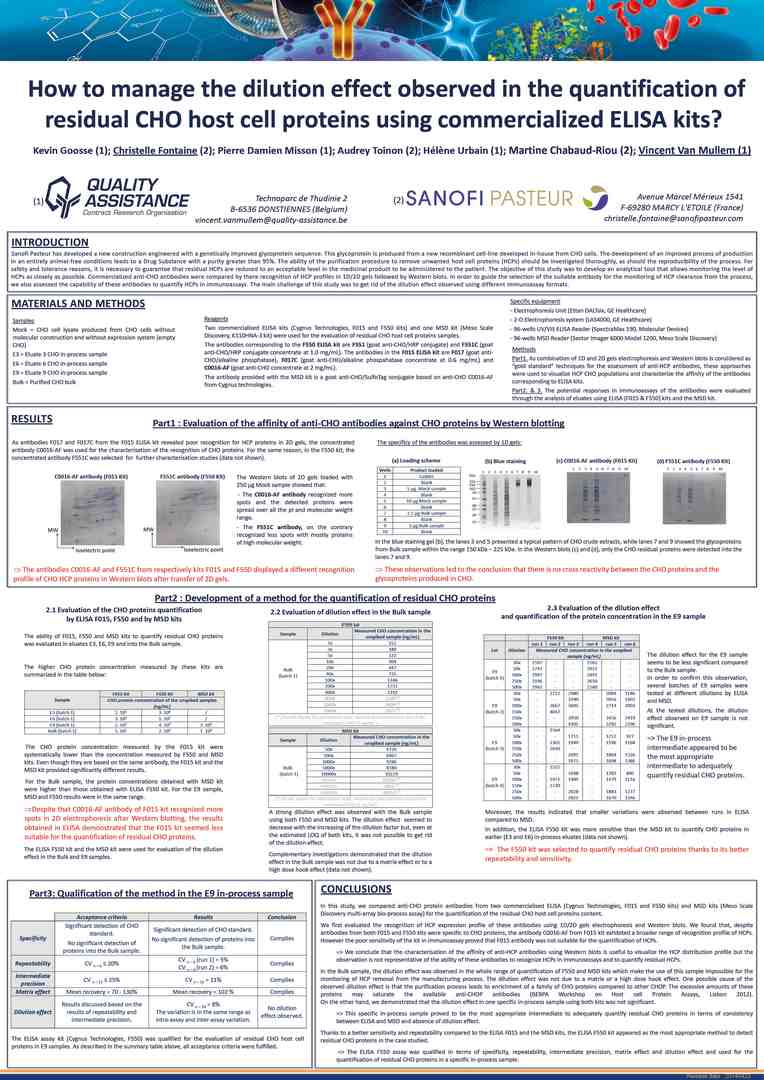How to manage the dilution effect observed in the quantification of residual CHO host cell proteins using commercialized ELISA kits?

Sanofi Pasteur has developed a new construction engineered with a genetically improved glycoprotein sequence. This glycoprotein is produced from a new recombinant cell-line developed in-house from CHO cells. The development of an improved process of production in an entirely animal-free conditions leads to a Drug Substance with a purity greater than 95%. The ability of the purification procedure to remove unwanted host cell proteins (HCPs) should be investigated thoroughly, as should the reproducibility of the process. For safety and tolerance reasons, it is necessary to guarantee that residual HCPs are reduced to an acceptable level in the medicinal product to be administered to the patient.
The objective of this study was to develop an analytical tool that allows monitoring the level of HCPs as closely as possible. Commercialized anti-CHO antibodies were compared by there recognition of HCP profiles in 1D/2D gels followed by Western blots. In order to guide the selection of the suitable antibody for the monitoring of HCP clearance from the process, we also assessed the capability of these antibodies to quantify HCPs in immunoassays. The main challenge of this study was to get rid of the dilution effect observed using different immunoassay formats.